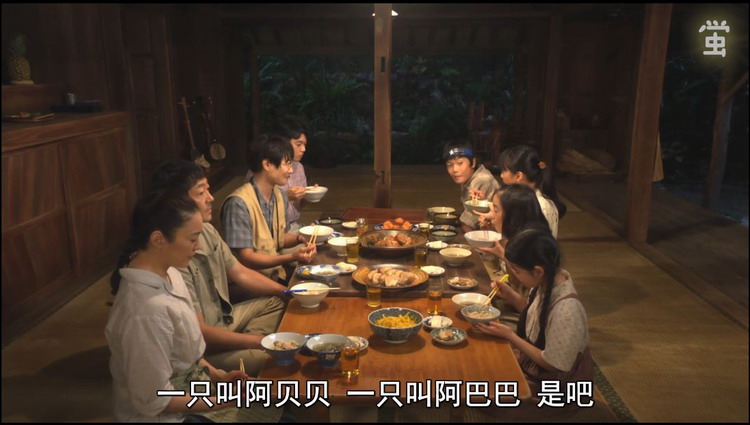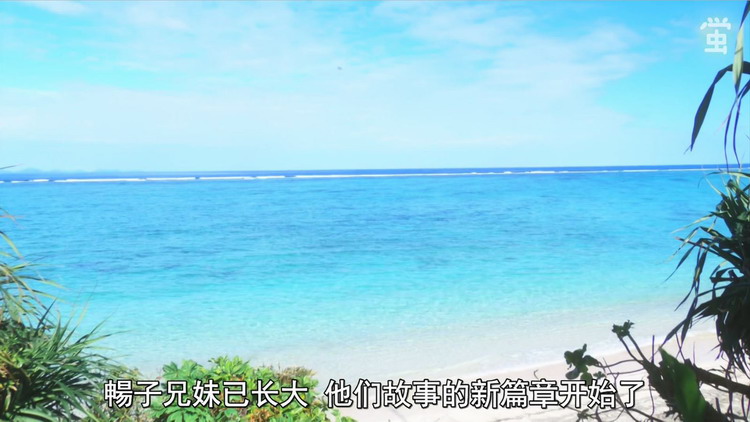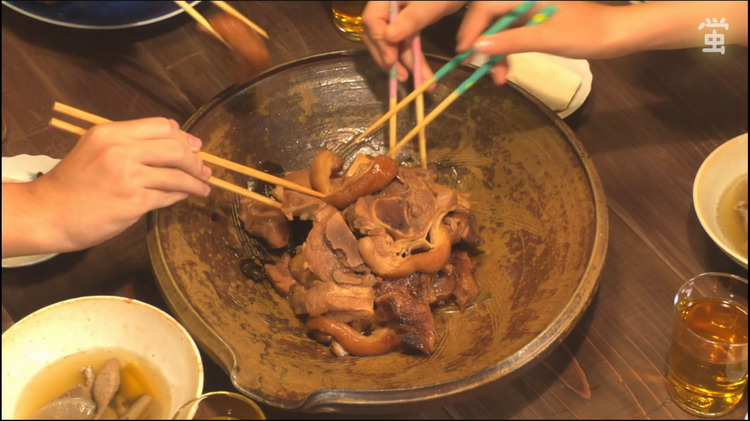
Following the practice of the past years, in the spring file of Japanese dramas in 2022, the new season (Part 106) "Morning Drama (Continuous TV Novel)" "Surge (ちむどんどん)" will be broadcast as scheduled. "Morning Drama" has always been about inspiring and successful "chicken soup" stories. In the past two years, it tends to choose celebrities as the prototypes of TV drama protagonists. For example, the prototype of "Aid" is the famous character composer Gu Guanyu and his wife Guguan Jinzi, while "Little Maid" is based on the famous comedy actress Ranghua Qianrongzi as the prototype. 
The title of "Surge of the Heart" exactly symbolizes the self-affirmation and excitement of the "female protagonist" when she pursues her dream. The setting of the protagonist Higa Yuko in the play is also a typical Japanese "inspirational drama" style. Originally, Higa Yuko lived with her parents and three siblings, and although she was poor, she was happy. However, his father, Bijia Xiansan, died suddenly of a sudden illness while doing farm work in the sugarcane forest, leaving the loan for building a house and buying land unpaid, and his mother had to bear the heavy responsibility of supporting the family alone. The other children have their own duties to raise pigs and grow vegetables, and Higa Yuko, who has loved food since childhood, is bound to become the "cooker" at home.
Yuuna Kuroshima, who plays Higa Yuko in the play (she is also from Okinawa), was once described by Zhou Fangzheng as "it looks pitiful at first glance". Such an appearance naturally forms a sharp contrast with the hard life in the play. It is precisely because of her beautiful appearance that Higa Yuko was hired by one of the few "good companies" in the area after graduating from high school, but the contempt for women shown by the company's executives made her give up this "opportunity".

The filming location of the TV series is the Yamahara area of Okinawa Island, which has the highest peak in Okinawa, is full of natural vegetation, and can see the iconic beautiful sea view of Okinawa. The co-located primary and secondary schools and a grocery store that sells everything show the atmosphere of modern society.
As a return gift, Fumihiko Aoyagi in the play once invited the Higa family to Nago City (the largest city in northern Okinawa) to enjoy a Western meal. Aoyagi's suits and leather shoes and the casual sandals of the Higa family, as well as the Higa family's restraint and anxiety like "Grandma Liu broke into the Grand View Garden" when they saw Western food for the first time, seem to reflect the difference between the two "urban and rural" and the life of the Higa family. . The happy expression on Higa Yuko's face when she and her companions ate a hamburger in a Western style for the first time after becoming an adult, naturally also laid a foreshadowing for her to go to Tokyo to study western cooking in the future.
For example, "Bitter Gourd Mixed Fried", it is easy to remind people of the home-cooked dish in Chinese food - fried bitter melon. Okinawans also add tofu and pork to scrambled eggs with bitter gourd according to their own eating habits. Many "Okinawa cuisine" dishes in the play are inseparable from pork. "Pork horn boiled" looks very similar to China's "Dongpo Pork". It is said that the fat and thin pork belly is boiled with soy sauce and sugar for two and a half hours until it is tender. In the play, the Okinawa "buckwheat" noodles, which aroused the amazement of the Tokyo people Aoyagi and his son, do not actually use buckwheat, but are processed with wheat flour like Chinese noodles.

"Surge of the Heart" poster
In contrast, the "freshly baked" "Surge of the Heart" chose a somewhat bland story-in the early 1970s, Higa Yuko, who was born in an Okinawan farmhouse, went to Tokyo to learn western cooking, and started to open an Okinawan restaurant. The dream of a restaurant, and then began her dream-building road. Compared to such celebrities as composers and actors, Higa Yuko can only be regarded as a small person. And this is probably what the famous Japanese director Zhou Fangzhengxing said, "Japanese people's ability to look at the world and history is not very strong, they are very discoverable about small lives and small things within a radius of five meters. of".The title of "Surge of the Heart" exactly symbolizes the self-affirmation and excitement of the "female protagonist" when she pursues her dream. The setting of the protagonist Higa Yuko in the play is also a typical Japanese "inspirational drama" style. Originally, Higa Yuko lived with her parents and three siblings, and although she was poor, she was happy. However, his father, Bijia Xiansan, died suddenly of a sudden illness while doing farm work in the sugarcane forest, leaving the loan for building a house and buying land unpaid, and his mother had to bear the heavy responsibility of supporting the family alone. The other children have their own duties to raise pigs and grow vegetables, and Higa Yuko, who has loved food since childhood, is bound to become the "cooker" at home.
Yuuna Kuroshima, who plays Higa Yuko in the play (she is also from Okinawa), was once described by Zhou Fangzheng as "it looks pitiful at first glance". Such an appearance naturally forms a sharp contrast with the hard life in the play. It is precisely because of her beautiful appearance that Higa Yuko was hired by one of the few "good companies" in the area after graduating from high school, but the contempt for women shown by the company's executives made her give up this "opportunity".

Corporate executives who despise women
If you only look at the plot, "Surge of the Heart" appears to be in the middle of the rules, with a little light comedy under the inspirational theme. When Higa Xiansan in the play was alive, the family kept two pigs, and the children named them after feeding them. When I came home one night, a pig was suddenly missing from the pigpen. As soon as the camera turned, the long-lost pork appeared on the dinner table (at that time, the Okinawan farmers only had pork for the New Year). It turned out that the Higa family deliberately slaughtered one of them in order to entertain the folklorist Fushihiko Aoyagi and his son Kazuhiko Aoyagi who came from afar from Tokyo.
Has become the "Ababa" of table food
However, such a small reversal is actually a common scene in "morning drama". In fact, it is the natural scenery and gourmet food that left a deeper impression on the people of "Surge of the Heart". After all, it has been more than 20 years since the last morning drama "Water Girl" (2001) set in Okinawa, and the scenery of the subtropical island shown in "Surge of the Heart" is unavoidable.The filming location of the TV series is the Yamahara area of Okinawa Island, which has the highest peak in Okinawa, is full of natural vegetation, and can see the iconic beautiful sea view of Okinawa. The co-located primary and secondary schools and a grocery store that sells everything show the atmosphere of modern society.

The Okinawa seascape that appears in many places in the play
In addition to the background scenery, the various delicacies that appear from time to time in the play can be called an important "selling point" of "Surge of the Heart". It is true that the appearance of "food" in Japanese dramas is not a new topic. Even in "morning dramas", "Thank you for your hospitality" and "Wanfu" have already appeared in the past ten years (the prototype of the protagonist is Momofuku Ando, the inventor of instant noodles). In TV dramas, dietary elements often drive the story forward, or play an important role in pointing out the theme of the TV series, and "Surge of the Heart" is no exception.As a return gift, Fumihiko Aoyagi in the play once invited the Higa family to Nago City (the largest city in northern Okinawa) to enjoy a Western meal. Aoyagi's suits and leather shoes and the casual sandals of the Higa family, as well as the Higa family's restraint and anxiety like "Grandma Liu broke into the Grand View Garden" when they saw Western food for the first time, seem to reflect the difference between the two "urban and rural" and the life of the Higa family. . The happy expression on Higa Yuko's face when she and her companions ate a hamburger in a Western style for the first time after becoming an adult, naturally also laid a foreshadowing for her to go to Tokyo to study western cooking in the future.

Higa Yuko who eats hamburger for the first time
But "Surge of the Heart" also has its own uniqueness-because the filming theme of the show is "everyone smiles when they eat delicious hometown food with their loved ones". The "hometown cuisine" mentioned here naturally refers to "Okinawa cuisine" which is very different from "Japanese cuisine", and it plays a very conspicuous role in "Surge of the Heart". In 2019, "Okinawa cuisine" was recognized as a "Japanese heritage", but due to the historical relationship between the Ryukyu Islands and China, for Chinese audiences, these "Okinawa cuisine" appearing in the play look more friendly.For example, "Bitter Gourd Mixed Fried", it is easy to remind people of the home-cooked dish in Chinese food - fried bitter melon. Okinawans also add tofu and pork to scrambled eggs with bitter gourd according to their own eating habits. Many "Okinawa cuisine" dishes in the play are inseparable from pork. "Pork horn boiled" looks very similar to China's "Dongpo Pork". It is said that the fat and thin pork belly is boiled with soy sauce and sugar for two and a half hours until it is tender. In the play, the Okinawa "buckwheat" noodles, which aroused the amazement of the Tokyo people Aoyagi and his son, do not actually use buckwheat, but are processed with wheat flour like Chinese noodles.

Close-up of pork dishes that appear in the play
It can be said that in this irritable early summer, these ordinary and familiar daily delicacies in "Surge of the Heart" are combined with the beautiful scenery as the background board. A bit of "healing".Related Posts